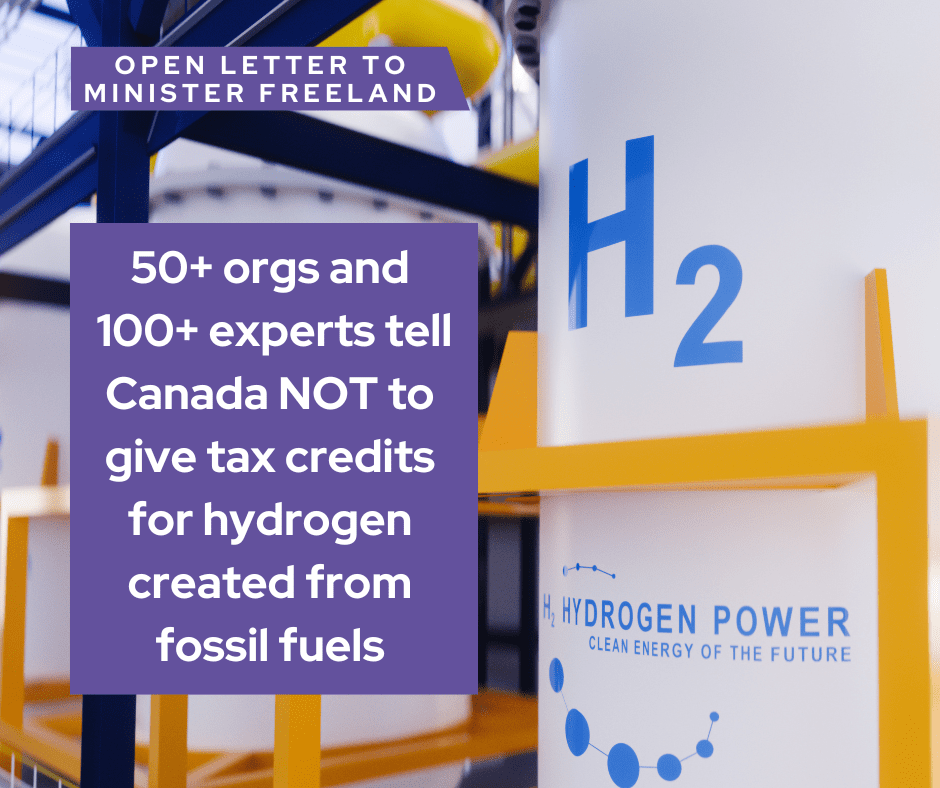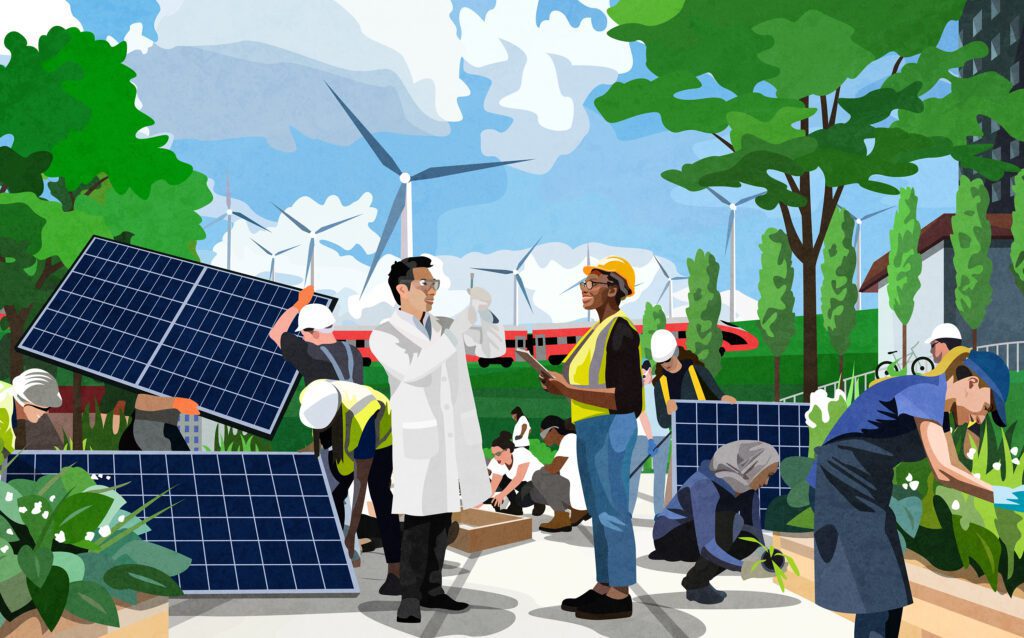With a new federal budget in the works, Finance Canada is currently developing two new investment tax credits – one for clean technology and one for hydrogen. A tax credit is an amount of money that taxpayers can subtract, dollar for dollar, from the income taxes they owe. They are useful tools for incentivizing things that we want more of – like renewable energy. That’s what the proposed clean energy tax credit does.
On the other hand, the proposed hydrogen tax credit is a bit trickier. Hydrogen, like electricity, is an energy carrier – it can be used to store and deliver usable energy, for example to a cement or steel factory or to produce fertilizer. Hydrogen doesn’t typically exist by itself in nature and must be produced from compounds that contain it. (Check out this blog for a backgrounder on hydrogen.)
Hydrogen is all the rage because when it is burned, it doesn’t create any greenhouse gas (GHG) emissions. It is being presented as a key climate change solution. But that disguises hydrogen’s dirty secret – it actually does contribute to global heating – and is actually 33 times more powerful than carbon dioxide.
On top of that, not all hydrogen is created equal. You can create hydrogen either using renewable energy or using fossil fuels. The vast majority of hydrogen being produced today comes from fossil fuels – with huge levels of polluting GHG emissions – and is used in petroleum refining and fertilizer production. Fossil fuel companies are promising that they can pair fossil hydrogen with carbon capture, storage and utilization (CCUS) – so-called ‘blue hydrogen’. But despite decades of research, CCUS is still unproven at scale, incredibly expensive and has a track record of under performance and outright failure. Even if CCUS functioned as promised, it does not address the significant methane leakage from the production and distribution of the gas used to make hydrogen.
That’s what makes the hydrogen tax credit tricky. There are two major risks, depending on how the tax credit gets designed. The first is that it could be used to subsidize fossil-hydrogen technology – that would be a new fossil fuel subsidy and incompatible with Canada’s emissions reduction goals.


For example, the gas industry is promoting the widespread use of hydrogen for home heating and to generate electricity – but these are areas where we have actual climate solutions, like electric heat pumps and induction stoves. Blending a really tiny amount of hydrogen into the gas grid or in power plants won’t really reduce GHG emissions – but it will lock in polluting infrastructure for decades.
That’s why Environmental Defence joined over 50 organizations and over 100 scientists and experts in sending a letter to Finance Minister Freeland, urging her not to create yet another fossil fuel subsidy.
The letter makes the following recommendations:
- The hydrogen tax credit should not be made available to any form of fossil-derived hydrogen.
- The hydrogen tax credit should only be available for strategic decarbonization opportunities. Applications with readily available alternative decarbonization solutions, such as blended hydrogen for home heating or for power generation, should be ineligible.
- The hydrogen tax credit should only be made available for projects that have free, prior and informed consent from Indigenous communities. Furthermore, companies receiving tax credits must be held accountable to mitigate harmful impacts on other impacted communities. These communities must be involved in the design and implementation of the tax credit.
Read the full letter from over 50 organizations and over 100 scientists and experts, along with a set of recommendations here.







